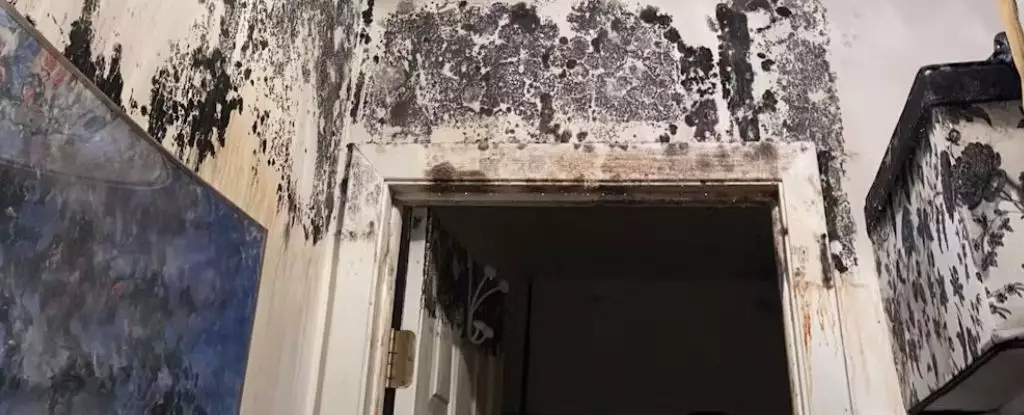Mold is an omnipresent element in our environment, making it a common issue that many homeowners face. While most of us are aware of mold’s unsightly appearance, its implications on health and living conditions are often underestimated. The ubiquitous nature of mold, with over one million species known to exist, can be particularly unsettling when discovered in our own living spaces. However, differentiating between harmless mold and potentially hazardous growth is crucial for effective management.
The notion of mold seems straightforward—visible black patches and dusty spots indicating a problem—but the reality is much more nuanced. Mold can thrive on various surfaces found in our homes, from plant leaves and pantry grains to various materials in our walls and floors. Despite its potential for creating adverse living conditions, certain molds play vital roles in our ecosystem as decomposers, recycling organic materials back into the environment.
Molds, being microscopic fungi, can produce countless spores that disperse into the air. These spore concentrations can number in the thousands, infiltrating our lungs with every breath. Although the vast majority of these molds are not harmful, they might trigger allergic reactions or respiratory issues such as asthma in sensitive individuals. An essential aspect of understanding mold is to recognize that while they are prevalent, only certain types pose genuine health risks.
The most notorious types often found in homes include **Aspergillus** and **Penicillium**. Though these molds may look similar under a microscope, an expert can differentiate them and ascertain their potential hazards. Another problematic variety, Stachybotrys, known as black mold, has been notoriously linked to severe health issues, particularly in vulnerable populations like infants, despite the lack of comprehensive evidence connecting it to specific illnesses in the general population.
Mold flourishes in environments with excess moisture, often arising from plumbing leaks or flood damage. The organic material comprising drywall and other building materials can become a breeding ground if not addressed promptly. Indoor mold is often a silent issue, lurking in hidden areas such as basements, crawl spaces, or within the walls where moisture accumulates. Even in seemingly pristine spaces, mold can be found quietly waiting to propagate.
When mold becomes a significant issue, homeowners must take a proactive approach to identifying sources of moisture. Neglecting to rectify leaks or inefficiencies in drainage can lead to persistent mold issues that may require extensive removal and restoration efforts. Understanding where molds are likely to grow can aid in preemptively addressing the challenge. High-risk areas, such as kitchens, bathrooms, and laundry rooms, demand vigilant inspection and maintenance.
Addressing mold growth requires awareness of the signs that indicate a problem. While visually inspecting for discolored patches or musty odors is essential, professional assessment is advised in cases of significant infestation. Trained indoor air quality specialists can perform air sampling tests to gauge mold spore concentrations within a home, providing a clearer picture of air quality and potential indoor mold presence.
Through scientific analysis, homeowners can determine if the necessity of mold remediation arises based on spore levels compared to the outdoor environment. When indoor concentrations exceed typical outdoor levels, significant mold growth is likely to be found within the structure. Additionally, the distinction between indoor and outdoor mold species can signal the presence of unwelcome growth inside the home.
Neglecting mold growth not only diminishes the aesthetics of a home but also poses health risks, particularly for those with allergies or respiratory sensitivities. The spores released into the air can exacerbate conditions like asthma and allergic rhinitis. Moreover, certain molds produce mycotoxins—harmful chemicals that may lead to serious health issues, particularly in extreme cases of mold infestation.
Although mycotoxin-related illnesses are not conclusively linked to the presence of indoor molds, it’s vital for homeowners to take mold emergence seriously, particularly in areas prone to flooding or unaddressed leaks. Most importantly, maintaining a dry and well-ventilated environment is fundamental to preventing mold growth from becoming a recurring issue.
Recognizing when mold requires immediate attention is an invaluable skill for homeowners seeking to maintain a safe and healthy living environment. The strategies for managing mold growth include regular inspections, addressing moisture issues, and understanding the types of mold that can proliferate within one’s home. By staying vigilant, individuals can mitigate the stress and potential health risks associated with mold growth, ensuring their homes remain a safe haven rather than a source of concern.


Leave a Reply